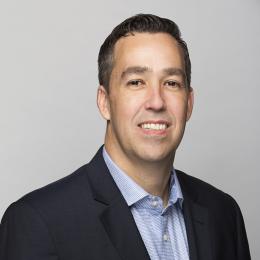The workforce is beginning to emerge from what has been described as the world's largest work-from-home experiment. The experience has undoubtedly shed light on unforeseen scenarios and challenges for today's workforce—creating situations that will impact the world of work indelibly. As companies evaluate performance KPIs and other factors for returning to work in the office, it is crucial to anticipate the potential risks of an extended remote work period and identify learnings to carry forward as employers debate the future locations of their employees. To gather insights to inform those efforts, we surveyed over 300 employees working in companies across the United States to understand attitudes, challenges, and perspectives surrounding the remote work experience. In this blog series, we explore the trends to anticipate in your organization, along with opportunities to address them for improved employee experience outcomes.
As the COVID-19 pandemic turned a gradual trend towards remote work into widespread overnight adoption, workers decamped to their home offices, living rooms, and kitchen tables, where many of them now share space with roommates, family members, and pets. As they adapted to their new workplace environments, remarkably quickly, their worlds shrank in favor of efficiency rather than effectiveness.
By and large, we see this play out in terms of higher overall employee productivity. Almost a quarter of people we surveyed reported productivity on par with pre-pandemic levels, and over a third reported increased productivity in this new working environment.1 It’s a phenomenon that has been observed in the pre-pandemic world as well; a two-year study found that the weekly productivity boost of remote workers was equivalent to a full day of work.
That productivity doesn’t come without a cost, though. Many of the people we surveyed said they are interacting with fewer individuals than they did when working in-person in the office, with interactions often limited to those whose help or input is needed to get a particular task completed. Employees report feeling a sense of unintentional yet exaggerated exclusiveness as a result, with some noting that their organizations seem more siloed than originally thought or designed. While collaboration, which was consistently ranked one of the top three challenges of working remotely in pre-pandemic research, is undoubtedly still occurring, it's happening within smaller teams that don't change. There’s more of a focus on getting things done than on delaying the project for another day or two to ensure that outside team members’ views are incorporated. And when that happens, new perspectives aren’t being introduced into the process. That, in turn, has a detrimental effect on innovation and creativity.
Employees and leaders also say increased time and effort is spent on reactive or short-term initiatives, with little time and headspace devoted to long-term strategic visioning. With organizations rallying around an "all-hands-on-deck" mentality to drive financial recovery, more junior employees say there has been a subtle shift in their day-to-day responsibilities and focus areas. In many instances, they've found themselves owning an initiative that company norms would have ordinarily required a team or manager to lead. Still, others say new processes, products, and initiatives aren't subject to the same stringent testing or approval requirements that were in place before the pandemic—though these employees say it’s not yet clear whether the change has harmful or unintended consequences.
Organizations should consider pausing their relentless focus on efficiency to ensure that employees feel connected—a new focus that can ultimately cultivate higher productivity and better-quality outputs over the long term. After all, our research shows that employees who fail to receive adequate communication are ten times more likely to be less productive.2 To balance efficiency imperatives with a broader orientation that encompasses quality, communication, and employee capability development, organizations can:
- Have managers and leaders participate in futures thinking or Rapid InnovationSM sessions that expand organizational thinking beyond pandemic survival and towards the foreseeable future.
- Reevaluate and redefine process standards to ensure continued quality with a shift towards speed. To infuse agility into how you work, consider incorporating one or two-week sprints aimed at uncovering key themes, stakeholder insights, and current state operating models that enable you to reimagine your organization through different lenses. Then, explore multiple alternatives and prototypes, and converge on the desired end state. With this direction, you can test select hypotheses with cross-functional teams in the next sprint.
- Create programs and communications to connect teams with similar initiatives. Use intrinsic and extrinsic motivators to nudge employees to combine efforts and share knowledge across functions and capabilities. This shift may even help identify redundancies that could free up employee time to focus on other projects, further increasing productivity.
Making Sense of Insights with Rapid Innovation
These remote work insights offer high-level direction. Yet, as you plan, you’ll need to understand how they can help you adopt a broader strategic focus for the foreseeable future. Design thinking is a cognitive process that enables you to reimagine possibilities and alternatives—grounding those options in a view of what is desirable, feasible, and viable for your organization. Applying design thinking, North Highland's Rapid InnovationSM approach can help you make sense of trends in your organization's unique context and identify targeted opportunities that solve your biggest remote-working challenges. By looking first at internal insights and then conducting mini design sprints to address the identified problems, you can get creative on quick solutions to test out. Employees have already demonstrated than they were more creative than they were previously, as evidenced by their successes in creating new workspaces and navigating the new exigencies of childcare. Harness that energy before employees revert to the status quo.
Click here to read parts one and two in our series.
1,2: North Highland Remote Work Research Study, 2020.
